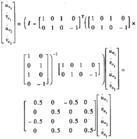1) dynamical tangent space alignment(DLTSA)


动态切空间排列
2) local tangent space alignment


局部切空间排列
1.
The paper focuses on the sensitivity of local tangent space alignment(LTSA) to outliers,and presents a robust local tangent space alignment(RLTSA) based on outlier detection.
研究局部切空间排列方法(LTSA)对离群点的敏感性,提出一种基于离群点检测的鲁棒局部切空间排列方法(RLTSA)。
2.
As an effective manifold-learning method,the local tangent space alignment(LTSA) algorithm is sensitive to outliers.
局部切空间排列(LTSA)算法是一种有效的流形学习方法,但该算法对孤立点的存在非常敏感。
3.
Recently, a new manifold learning algorithm, LTSA (local tangent space alignment), has been proposed.
局部切空间排列算法(localtangentspacealignment,简称LTSA)是一种新的流形学习算法,能有效地学习出高维采样数据的低维嵌入坐标,但也存在一些不足,如不能处理样本数较大的样本集和新来的样本点。
3) dynamic space array


动态间隔排列
4) spatial ordering


空间排列
1.
Since spatial ordering based on one dimensional mapping for multi dimensional data has its own merits, the spatial clustering characteristics of Morton code,Gray code,Hilbert code and Sierpinsky code are analyzed and compared.
分析了基于栅格格网的索引数据结构在空间查询中的重要地位 ,讨论了基于多维数据一维映射的空间排列的优点 ,对 Morton码、Gray码、Hilbert码和 Sierpinsky码的空间聚类特征进行了分析和比较 ,得出了 Hilbert码在空间查询中效率最高的结论 。
5) orthogonal discriminant linear local tangent space alignment


正交判别的线性局部切空间排列
1.
In order to develop linear local tangent space alignment to supervised learning algorithm, an algorithm called orthogonal discriminant linear local tangent space alignment is proposed.
为了将线性局部切空间排列算法发展为有监督的学习算法,提出了一种正交判别的线性局部切空间排列算法。
6) Dynamic space


动态空间
1.
This discourse discussed the relationship between landscape architecture dynamic space design and 3DS & CAD (3D STUDIO MAX & Computer Aided Design) and clarified the features, approaches and procedure of landscape architecture dynamic space design where 3DS & CAD is applied.
探讨了园林动态空间设计与计算机辅助设计间的关系 ,论述了利用计算机辅助设计方法进行园林动态空间设计的特点、方法和步骤。
2.
We have to pay respect to the structure and aesthetics value in the dynamic space of the excellent historical building.
让人不得不注意这幢优秀历史建筑动态空间的结构及美学价值。
补充资料:切空间

设m是可微的流形,p是m上一点, p处所有切向量全体张成的线性空间称为m
在p处的切空间, 记为t_p(m). 如果p是光滑点,则t_p(m)的维数就是流形m的维数。
说明:补充资料仅用于学习参考,请勿用于其它任何用途。
 专业词汇(按中图法分类)
专业词汇(按中图法分类)